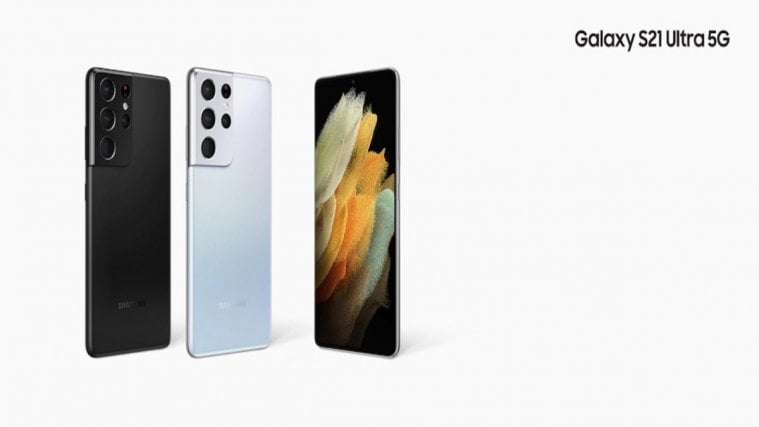From VGA cameras to 108MP shooters — smartphone photography has seen a major bump in photo resolution over the last twelve years. Apart from the ludicrous megapixel jump, the sensors have also gotten bigger and there are bunch more lenses to play around with. All in all, it’s an exciting time for smartphone camera enthusiasts. However, if you’re more of a numbers guy, you might be a tad disappointed with the output; especially the resolution of the images you click.
Today, we’ll tackle this peculiar problem and hopefully offer you an explanation of why the images you get aren’t as high-resolution as promised.
Related: How to go all-black on Android
Why aren’t you getting full-res photos already
Smartphones have become exceptionally potent over the course of their existence. Manufacturers are more than aware of the demands of the common folk and hardly miss the chance to lure them into a “trap.” Their current, and probably the most potent weapon is the numbers game, especially in the camera department.
Almost all the leading flagships — except for iPhones, which are perfectly happy with 12MP shooters — come with juiced-up camera systems, crossing even the 100MP mark. Currently, OnePlus, Samsung, and Xiaomi all have flagships that come with a 108MP primary camera.
According to the device specification, any user would be right to look for 108MP images out of their smartphone cameras. However, in almost all cases, we tend to get 12MP shots, matching the resolution of an iPhone with a 12MP sensor. If you’re upset with the output and are thinking that you’ve been duped, we’d like to tell you that nothing of that sort has happened.
In reality, your smartphone is cutting the resolution to give you better images. The process of merging multiple pixels — 9 pixels into 1 when you consider a 108MP sensor — is called Pixel Binning, and it’s truly a work of art.
Related: How to customize your Android device: Make your Android look the coolest around!
Pixel Binning
As mentioned in the last sentence, Pixel Binning is the act of merging multiple smaller pixels into one comparatively giant pixel. This piece of tech was introduced in 2018 and is since being used in all leading Android flagships and for good reason. Since smaller pixels found on smartphone cameras lack the quality to capture more light, the overall photo quality suffers.
By combining multiple smaller pixels and creating a bigger one, your smartphone is capturing more light and improving the overall quality of your images. Even if you don’t notice the difference in well-lit conditions, you’re guaranteed to see the results for yourself under poor lighting.
How to get the maximum resolution out of your mobile camera
Now that you know what Pixel Binning is and how useful it can be, it might not make much sense to switch to full resolution. However, if you’re shooting outdoors, have plenty of light to play around with, and want complete control over your photos, switching to the maximum resolution isn’t a bad idea, as higher-resolution images give you more cropping room and excellent sharpness.
Depending on the brand of your smartphone, you might or might not have a dedicated button to switch to the maximum resolution. The leading smartphone manufacturer on the planet — Samsung — doesn’t have a dedicated switch for max-res images. Thankfully, switching to maximum resolution images is still pretty straightforward. First, launch the camera app on your Samsung Galaxy smartphone. Now, go to the ‘Photos’ tab. At the top of your screen — when held in portrait mode — you’ll find an aspect ratio tab. Tap on it to reveal the available options.
![]()
Switch to ‘4:3’ and you’ll see a prompt showing the maximum resolution of your images.
![]()
That’s all! After you switch over, all of your photos would be shot in maximum resolution.
Related: How To Pin your Favorite Apps on Wear OS
Are full-resolution images any good?
We’ve seen what Pixel Binning is and we’ve also discussed how you could get max resolution photos on your smartphones. In this section, we’ll tell you whether it’s a good idea to switch to the maximum possible resolution.
Pixel Binning gives you better images in low light, we all know that by now. However, that isn’t the only thing you get with Pixel Binning. Since 9 pixels in a 108MP shot are being merged into 1, the size of the photos gets reduced, drastically. For example, a standard 12MP shot can eat up around 2/3MB of your storage.
A full 108MP shot, on the other hand, could easily be around 25MB. And considering none of the leading flagships come with expandable storage anymore, it’s important to preserve your internal storage space. Additionally, if you are fond of cloud storage, you’ll be having a hard time uploading those images in the highest quality possible.
The benefits of full-resolution images only come into play when you’re looking to heavily crop your images or are looking for large-size prints for your living room. Otherwise, we’d advise you to reap the benefits of Pixel Binning.
RELATED
- How to Pin a Message on Microsoft Teams
- How To Make Payments Using Your Wear OS Smartwatch
- How To Track Your Respiratory Rate on a Pixel Phone
- How To Measure Heart Rate on Your Pixel Phone
- Google Photos: How To Get and Use New Editor With One-Tap Suggestions
- Using Google Docs Word Count on PC and Phone: Everything You Need To Know





